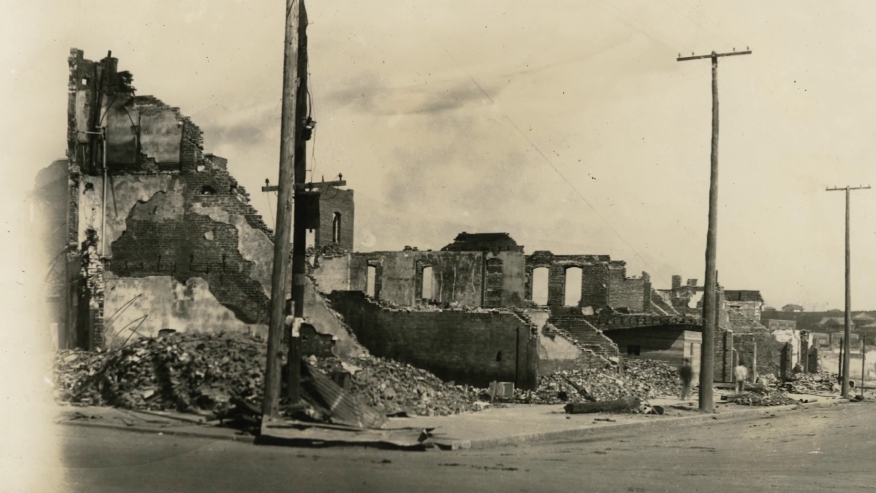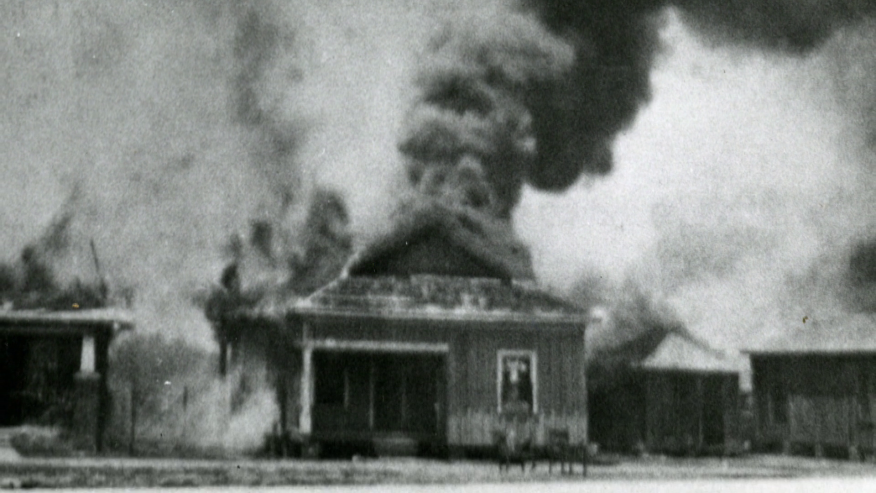‘All hell broke loose’: A look at Tulsa’s Black Wall Street
TULSA, Okla. (KLRT/KFOR) — Tulsa is a city diverse in its people and culture, fueled by a complicated past.
Some of which involves the historic Greenwood District, better known as Black Wall Street, a community of prominence and wealth for Black residents in the early 1900s.
“You could go down to Greenwood Avenue, which was really the hub of what was called Black Wall Street and find restaurants, grocery stores and movie theaters and taxi cabs and haberdasheries and furriers. But also doctors and lawyers and pharmacists, dentists,” said Hannibal B. Johnson, an author, attorney and consultant.
“Many of the people who came to Indian Territory in Greenwood had received their education particularly in the east, Moorehouse, Spellman and Howard University,” said Michelle Place with the Tulsa Historical Society and Museum. “So they were professional people with professional skills.”


Black Wall Street’s founding father, O.W. Gurley from Pine Bluff, Arkansas, arrived in Tulsa in 1906.
“He came already having wealth,” Johnson said.
He opened a grocery store, bought and sold land to other Black people.
Businessman Simon Berry ran a taxi and bus service and owned a chartered plane company catering to rich oilmen.
“It was said that each dollar changed hands 19 times before it left the community.”
MICHELLE PLACE, TULSA HISTORICAL SOCIETY AND MUSEUM
“It was said that each dollar changed hands 19 times before it left the community,” Place said.
Black people living the American Dream, but a volatile situation loomed.
“This is really a dark time,” said Johnson. “A period during which events that were called race riots were happening all throughout the United States.”
Greenwood was a fertile field for tension between Blacks and whites.
“If one embraces this notion of white supremacy, and one can look across the railroad tracks and see a very successful Black community with people owning homes, driving cars, wearing nice clothes, then something is amiss. This ship must be righted,” said Johnson.
The trigger was an encounter in the Drexel Building elevator in downtown Tulsa between teenagers Dick Rowland, a Black shoeshine boy, and Sara Page, a white elevator operator.
“Something happened on that elevator, we don’t know what,” Johnson remarked.

Page said she was assaulted, though she later recanted. The newspaper embellished the story adding more fuel to the fire.
Out of fear Rowland would be lynched, armed Black men came to the jail to protect him. They were met by a larger group of armed white men. Then, a gunshot.
“As one of the massacre survivors says, ‘all hell broke loose after that,'” said Johnson.

An angry white mob set Greenwood on fire. The entire community burned, totaling 35 city blocks. The popular Dreamland Theatre was gone. More than 1,2000 homes, 600 businesses and the famed Black Wall Street were left in ruins, as were a number of churches.
“All of that happened in only 18 hours,” said Rev. Dr. Robert Turner, pastor of Vernon AME Church.
Rev. Turner pastors historic Vernon AME Church, where only the basement survived the massacre.
“It was the first time airplanes were used to terrorize Americans,” Turner declared. “Not 9-11, not Pearl Harbor but right here in Greenwood in Tulsa, Oklahoma.”
It’s estimated between 100 to 300 people, mostly Blacks, were killed, with many others wounded.
Some of the survivors, including O.W. Gurley, left and never returned.
After the massacre, the people who stayed would rebuild Greenwood. In fact, in the 1940s, the Greenwood community thrived with more than 200 documented Black-owned businesses. Ironically, it was integration that led to its demise.
“When integration comes along and Black people are able to spend outside the community, they’re able to access more goods and services at better price points, it undermines the financial foundation of the community,” Johnson stated.
Another blow was an urban renewal in the 60s, where the city would buy up or condemn some homes and businesses. It also brought Interstate 244, which barrels right through the heart of Greenwood.
“That had a devastating impact,” remarked Johnson.

Today, there are some businesses on Greenwood Avenue, but Vernon AME Church is the only property still entirely Black-owned. A ballpark and Oklahoma University-Tulsa occupy a huge chunk of land where homes once stood.

The community’s rich history teaches us many lessons, including the power of the human spirit, and the notion that some history bears not repeating.
“I typically would paraphrase something Dr. Maya Angelou said that I think is so simple and profound,” Johnson said. “She said, ‘Our history, despite its wrenching pain cannot be unlived. But if faced with courage, it need not be lived again.'”

















